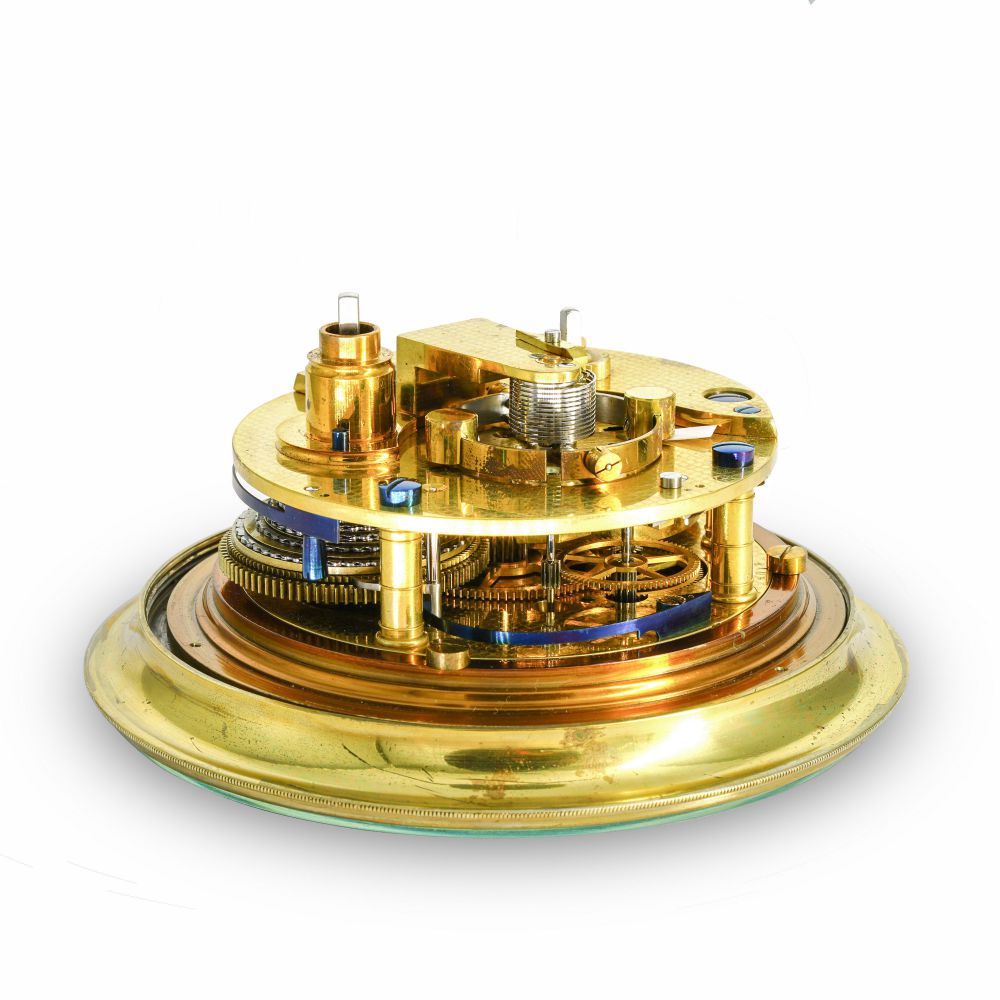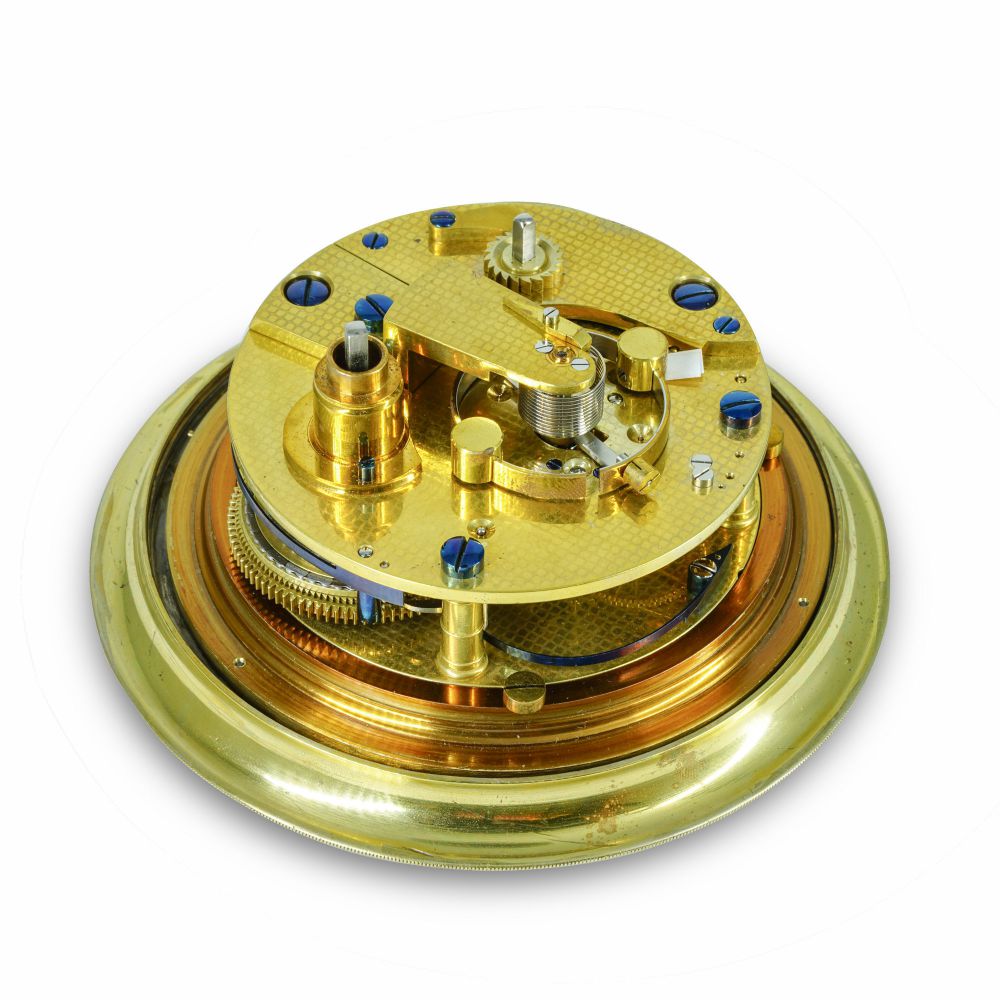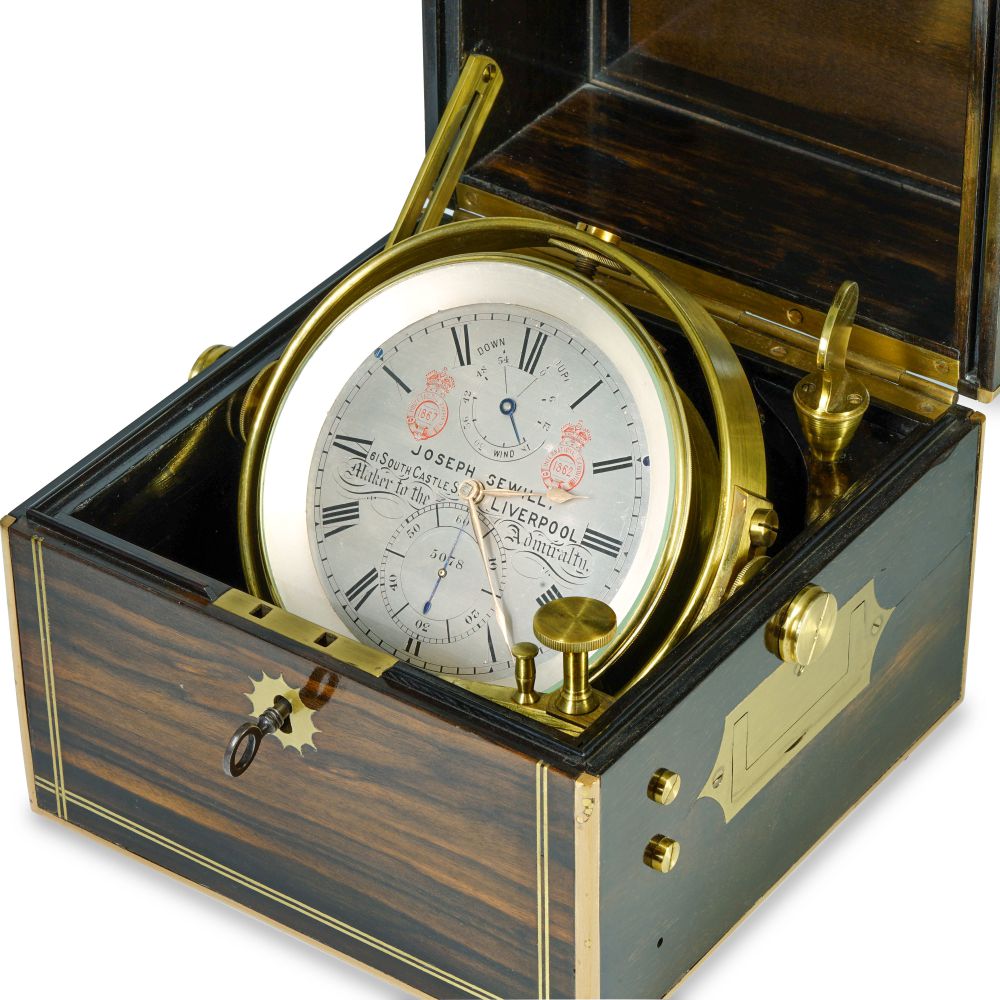19th Century English Marine Chronometer
Inventory Number: C2112002
Made in Liverpool circa 1870-1880, signed Joseph Sewill. Silvered dial with black Roman numerals, subsidiary seconds, and 54-hour power reserve indicator. Gimballed bowl, a three-tier mahogany box with inset drop handles. The mahogany box is inlaid with a circular mother of pearl on the front.
Fusée movement with Earnshaw’s spring detent escapement, compensated bimetallic balance, free-sprung cylindrical hairspring.
Functions: Hours, minutes, small seconds, 54-hour power reserve indicator.
A Marine chronometer is a timepiece that is precise and accurate enough to be used as a portable time standard. When sailing, navigators could determine their latitude by measuring the sun's angle at noon, or, in the Northern Hemisphere, to measure the angle of Polaris (the North Star) from the horizon. As the Earth rotates at a regular rate, the time difference between the chronometer and the ship's local time can be used to calculate the longitude of the ship relative to the Greenwich Meridian (defined as 0°).
Historical Background
Joseph Sewill was a watchmaker, chronometer maker, and nautical instrument maker in Liverpool, England. He likely retired to London in 1862. His son, John Joshua Sewill (d. 1891), succeeded him in the business.
After John Sewill died, the business passed to his brother Frank Sewill. By 1905, the family was no longer involved with the firm, which continues in existence in Liverpool until this day.




